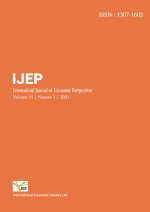Analysis of current regulations related to energy management in Ecuador
Keywords:
administration, Ecuador, energyAbstract
The norms written and designated by the state in some area have an established function and an objective to fulfill either momentary or sustainable over time. This article seeks to provide in a superficial way the structure of the Ecuadorian electricity sector in the administrative area. In addition to that, mention some rules applied within the system to understand the importance of compliance, which is reflected in good service and future projects to continue improving the system. As for example article 21 of the LOSPEE. A descriptive methodology was used that seeks to know and presents the level of knowledge that Ecuadorians have regarding the regulations that currently exist related to energy management in the country, an analysis and data collection that can serve as a result was obtained. Guide to this and future research; considering the opinion of the people and their perspective in relation to article 21 of the Organic Law of Public Electricity Services.
References
Arcentales, G. A. T., Gordin, R. G., Perez, A. V., & Rodriguez, A. Z. (2017). Climatization, energy efficiency and environmental protection. International Research Journal of Engineering, IT and Scientific Research, 3(2), 59-66.
Arias, FG (2017). Sports Economics: State of the question and practical cases. Fidias g. Arias odón.
Barrezueta, H. (2015). Ley Orgánica de Telecomunicaciones. Quito, Pichincha, Ecuador.
Ghavifekr, S., Afshari, M., Siraj, S., & Seger, K. (2013). ICT application for administration and management: A conceptual review. Procedia-Social and Behavioral Sciences, 103, 1344-1351. https://doi.org/10.1016/j.sbspro.2013.10.705
Guijarro, S., Naranjo, J., Padilla, M., Gutiérez, R., Lammers, C., & Blum, R. W. (1999). Family risk factors associated with adolescent pregnancy: study of a group of adolescent girls and their families in Ecuador. Journal of adolescent health, 25(2), 166-172. https://doi.org/10.1016/S1054-139X(99)00020-8
Hall, P. J., & Bain, E. J. (2008). Energy-storage technologies and electricity generation. Energy policy, 36(12), 4352-4355. https://doi.org/10.1016/j.enpol.2008.09.037
Hernández-Sampieri, R., Fernández-Collado, C., & Baptista-Lucio, P. (2017). Research Scope.
Joshi, P., & Peter, V. F. (2017). A study of administrative functioning of different departments of devi ahilya vishwavidyalaya, indore. International Research Journal of Engineering, IT & Scientific Research.
Kayser, O., Olbrich, C., Yardley, V., Kiderlen, A. F., & Croft, S. L. (2003). Formulation of amphotericin B as nanosuspension for oral administration. International journal of pharmaceutics, 254(1), 73-75. https://doi.org/10.1016/S0378-5173(02)00686-5
Lund, H. (2007). Renewable energy strategies for sustainable development. Energy, 32(6), 912-919. https://doi.org/10.1016/j.energy.2006.10.017
McDonald, A., & Schrattenholzer, L. (2001). Learning rates for energy technologies. Energy policy, 29(4), 255-261. https://doi.org/10.1016/S0301-4215(00)00122-1
Paul, S., & Bhattacharya, R. N. (2004). Causality between energy consumption and economic growth in India: a note on conflicting results. Energy economics, 26(6), 977-983. https://doi.org/10.1016/j.eneco.2004.07.002
Pérez-Lombard, L., Ortiz, J., & Pout, C. (2008). A review on buildings energy consumption information. Energy and buildings, 40(3), 394-398. https://doi.org/10.1016/j.enbuild.2007.03.007
Pouton, C. W. (2000). Lipid formulations for oral administration of drugs: non-emulsifying, self-emulsifying and ‘self-microemulsifying’drug delivery systems. European journal of pharmaceutical sciences, 11, S93-S98. https://doi.org/10.1016/S0928-0987(00)00167-6
Ruiz, M. A. G. (2006). Convention on mutual administrative assistance in tax matters and Community rules: how to improve their interaction. EC Tax Rev., 15, 196.
Sanchéz-Astudillo, JE, Román-Avendaño, V., & Pincay-Sancán, DR (2017). Electric Power in Ecuador and its impact on a collection company. Publishing Magazine , 4 (13 (3)), 65-83.
Vasco, C., Ruales, J., & Kamal-Eldin, A. (2008). Total phenolic compounds and antioxidant capacities of major fruits from Ecuador. Food chemistry, 111(4), 816-823. https://doi.org/10.1016/j.foodchem.2008.04.054
Published
How to Cite
Issue
Section
Copyright (c) 2021 Gino Joaquín Mieles Mieles, Byron Fernando Chere Quiñónez, José Enrique Escobar Sandoval, Luis Adrián González Quiñónez, Alcira Magdalena Vélez Quiroz, María Rodríguez Gámez

This work is licensed under a Creative Commons Attribution 4.0 International License.
Allows users to: distribute and copy the article; create extracts, abstracts, and other revised versions, adaptations or derivative works of or from an article (such as a translation); include in a collective work (such as an anthology); and text or data mine the article. These uses are permitted even for commercial purposes, provided the user: gives appropriate credit to the author(s) (with a link to the formal publication through the relevant URL ID); includes a link to the license; indicates if changes were made; and does not represent the author(s) as endorsing the adaptation of the article or modify the article in such a way as to damage the authors' honor or reputation. CC BY







